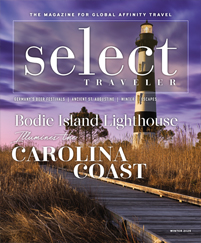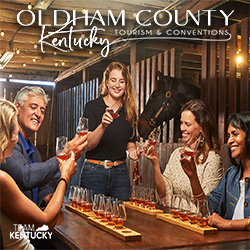While St. Augustine is famed for its age — founded in 1565, it’s the oldest continuously occupied European settlement in the country — it’s another part of the city’s history that really shines. St. Augustine owes the star-shaped 17th-century Castillo de San Marcos to the Spanish, who replaced earlier wooden fortifications with the city’s first stone fort. Now a national monument, it is the oldest masonry fort in the continental U.S.
The Spanish colonial authorities granted freedom to slaves who escaped from British North America, and Fort Mose, just north of St. Augustine, became the first free Black settlement in what is now the United States. In the late 1700s, St. Augustine also became a haven for embattled indentured servants (many from the island of Minorca, along with Spaniards, Greeks and Italians) fleeing harsh conditions at the disastrous indigo plantation of New Smyrna, 70 miles to the south. The Minorcans, as they came to be known, flourished in the colony, and more than 20,000 descendants still call the area home today. Their cultural influence remains strong, reflected in dishes like pilau, smoked mullet and chowders livened with the fiery datil peppers native to Florida’s northeast.
But it was Gilded Age potentates of the late 1800s that made the most permanent mark on St. Augustine, creating architecture that still draws visitors today. Northerners had wintered in the city for decades, believing the warmer weather provided a healthy respite or even a cure for their ailments. Writer Ralph Waldo Emerson spent time there in 1827, crediting the climate with easing his tuberculosis and joint pains. Nearly 60 years later, two wealthy businessmen would begin to build the St. Augustine that people flock to today.
Villa Zorayda
It was Franklin W. Smith, a wealthy hardware store magnate and architecture enthusiast, who introduced the Spanish/Moorish stylings that are now preserved throughout the city. After touring the grand Alhambra palace in Granada, Spain, Smith built his own version in St. Augustine. Smith used his invention — a unique combination of Portland cement mixed with crushed coquina, an abundant porous limestone formed from clam shells — to build Zorayda, the first concrete structure in Florida. This construction method and architectural style became the standard in St. Augustine, permanently influencing the city’s buildings. It notably impressed Henry Flagler, who adopted it for his major projects, and the style was also used in many of St. Augustine’s other historic structures. After Smith’s death, the glorious structure was bought by Syrian antiquities dealer Abraham Mussallem. Today, the museum features the priceless antique collections of both men, including a 2,400-year-old Egyptian rug that is considered to be the world’s oldest carpet.
Hotel Ponce de Leon
Henry Flagler, a railroad baron and the co-founder of Standard Oil, was inspired by Smith’s Zorayda and, after attempting to purchase the home, used Smith’s poured concrete construction method to build the opulent Hotel Ponce de Leon. Opened in 1888, the “Ponce” was a modern marvel, with Flagler’s friend Thomas Edison personally overseeing the installation of the entire electrical system, making it the first building in the country designed and constructed for electric power. The hotel was an immediate hit with high society, as presidents and celebrities — including Rudolph Valentino and Babe Ruth — flocked to the ornate 540-room palace. But Flagler’s southward-expanding empire of hotels, served by his Florida East Coast Railway, drew guests to even warmer climates. In 1968, the landmark hotel became home to the newly established Flagler College.
Hotel Alcazar
Another Flagler hotel, Hotel Alcazar was designed by the architecture team that would go on to create the New York Public Library and Washington, D.C.’s Russell Senate Office Building. Completed in 1888, the hotel boasted a three-story ballroom and the world’s largest indoor swimming pool. Though the hotel closed in 1932, it was soon given a second life. After a 1946 stay at the Ponce, Chicago publisher Otto C. Lightner purchased the Alcazar to house his impressive collection of art and oddities. The Lightner Museum opened to the public in 1948. The delightfully eclectic exhibits include a shrunken head, an Egyptian mummy, Tiffany lamps and Victorian mechanical musical instruments, all in the former hotel’s grand setting.
Casa Monica Hotel
Zorayda creator Franklin Smith tried his own hand at the hospitality business, opening the Spanish-style Casa Monica Hotel in 1888, only to sell it after just four months to Henry Flagler. Closed after the Great Depression, the hotel served as the St. Johns County Courthouse in the 1960s. Hotelier Richard Kessler purchased and restored the long-vacant building, opening its doors again to guests — who are welcomed with a cold glass of champagne — in 1999. Today, Smith’s vision is a Moroccan- and Spanish-inspired fantasy, with velvet-draped and art-bedecked walls, ornate chandeliers, and intricate tile and woodwork. Located in the heart of the historic district, it’s the ideal luxurious base for exploring all of St. Augustine’s Gilded Age grandeur.
Feast Like a Flagler
There’s no shortage of distinctive dining for your group in St. Augustine. The ocean waters of Florida’s “First Coast” provide an endless array of fresh fish and seafood while local farms deliver a rainbow of fruits and vegetables.
Hand-painted tiles and bubbling fountains are part of the charm at the family-owned Columbia Restaurant. The Spanish/Cuban-inflected cuisine is as perfect as the decor and has been delighting diners since 1905.
On the banks of the St. Sebastian River, Asado Life offers Argentinian-inspired, live-fire South American barbecue in a relaxing setting.
For spirits that also serve as wonderful souvenirs, reserve a tasting tour at St. Augustine Distillery. Located in a beautifully restored 1917 ice plant, the community-founded and family-owned business produces handcrafted, award-winning bourbon, rum, gin and vodka.
For superb seafood and sparkling sunsets with a rustic, Old Florida vibe, there’s no better choice than Aunt Kate’s Restaurant on the river, where diners can relax on live oak-shaded decks or in the dining room while feasting on icy oysters, fresh shrimp, delicious soups and other delicacies.









